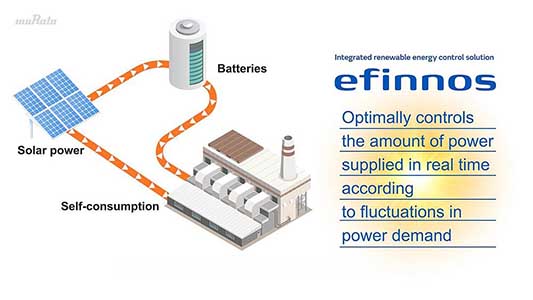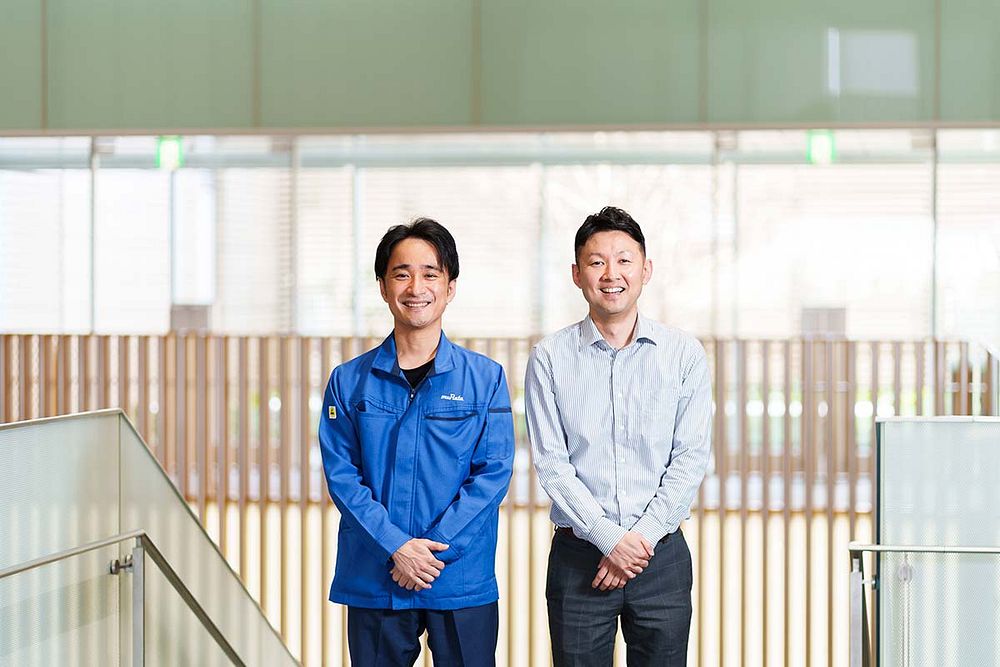The Japanese government set a target to ensure that 40% to 50% of energy supply and demand comes from renewable energy by 2040 in the Strategic Energy Plan it revised in 2025. The climate crisis is becoming more serious. Under these circumstances, the question is how we should approach energy issues.
Murata Manufacturing has developed the efinnos integrated renewable energy control solution that utilizes AI. Murata has been building up a proven track record of operation for efinnos since 2021 as a major stepping stone to ensuring 100% renewable energy use in five of our facilities, including our plant in Kanazu, Fukui Prefecture.
We spoke with Matono and Mukai, who are in charge of the energy business in Murata, about the technical features of efinnos and its future prospects.
1. Energy Management Technology That Solves Challenges in Solar Power Generation
–Please tell us about efinnos. What issues did you have in mind when you were developing it?
Matono: efinnos is a mechanism that realizes a stable supply of energy by combining solar power generation equipment and storage batteries. Understandably, solar power generation is greatly affected by the climate conditions. For example, when it snows, the amount of power generated drops to almost zero. Even if it is sunny, the amount of power generated falls if there are just a few clouds.
Moreover, the amount of power used fluctuates greatly depending on the substance of the work even in plants that actually use the electricity. A supply and demand gap arises when not much power is generated on days when a lot of electricity is used and, conversely, when lots of power is generated when not so much electricity is used. The role of efinnos is to fill that gap.
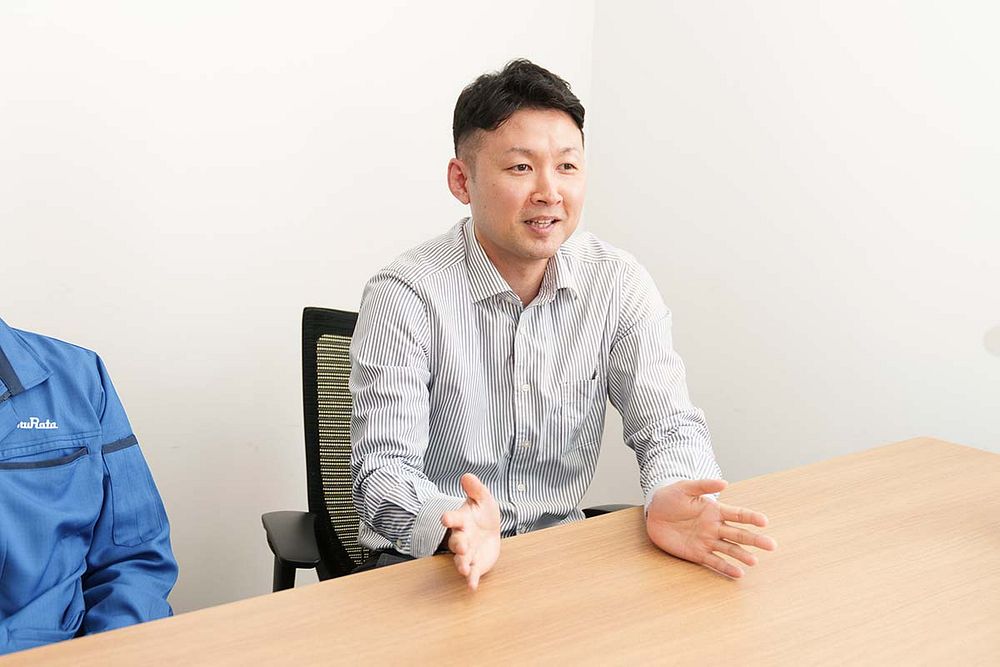
Matono was involved in the development of efinnos and was also in charge of introducing it into Kanazu Murata Manufacturing
Mukai: Murata Manufacturing has joined RE100. RE100 has set the aim of ensuring that 100% of the power used in business comes from renewable energy. Accordingly, we wanted to use the electricity we make with our own solar power generation equipment without waste or omission. We developed efinnos with the aim of filling the gap between energy supply and demand by introducing AI into the energy management system (EMS) for optimal control. We designed efinnos to be able to finely control power on the assumption that we will consume all the power generated without selling it.
efinnos determines when to store power and when to discharge it based on the amount of power generated and consumed, which fluctuates depending on the climate situation and various other conditions. Storing surplus power in storage batteries without waste has made it possible to maximize the utilization of solar power generation. This integrated power is the feature of efinnos.
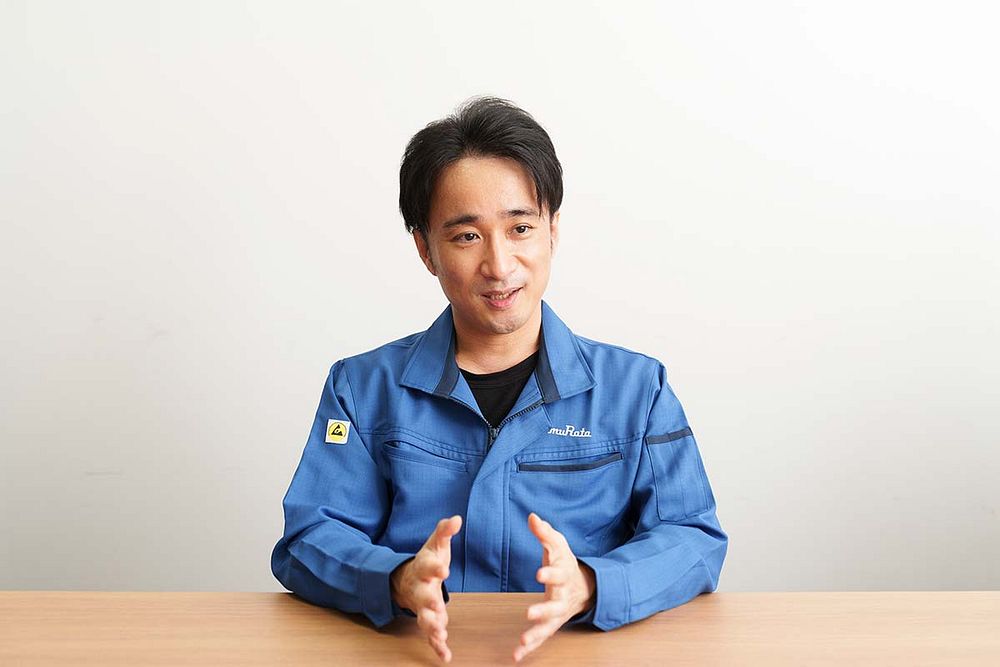
Mukai was similarly in charge of the development of efinnos. He is in charge of the energy management system business
2. Mechanism of the Maximum Power Consumption Limit Function That Realizes Reduced Electricity Bills
–In addition to the proven track record of operation for efinnos in five plants at Murata, we have heard that several companies have already introduced the system in the first fiscal year when you started selling it externally. What is attracting expectations and praise?
Matono: We are able to provide both economic value and environmental value at the same time. First, I would like to talk about economic value. In the case of power generation optimized for the feed-in tariff (FIT) scheme adopted by many companies, all the power is sold. Therefore, there is no need to control the storage and discharge of power like with efinnos. However, the purchase price of power has now dropped and electricity prices have risen sharply. Accordingly, there has been an increase in the number of companies wanting to lower their electricity bills by consuming the power they generate themselves rather than selling it.
Moreover, if power is sold based on FIT, the environmental value of that belongs to the country, not the company. Murata Manufacturing previously sold power. However, we have chosen to consume all the electricity we generate with sunlight since developing efinnos. efinnos comprehensively controls power generation, storage, and consumption. Therefore, Murata Manufacturing can retain the environmental value. This contributes to implementing the recommendations of the Task Force on Climate-related Financial Disclosures (TCFD). In addition, I think we can demonstrate our corporate stance of proactively tackling environmental challenges by attracting attention to efinnos as a new technology.
Mukai: efinnos has a maximum power consumption limit function. This function levels the power load by AI predicting the peak of power consumption. This leads to a reduction in contract power. That in turn results in reduced annual electricity bills. I feel that this is an effect that is also expected by companies that have introduced efinnos.
Many companies place importance on the economic effect. Accordingly, we thoroughly simulate and explain the effects of efinnos before introducing it. Additionally, we regularly speak to those companies even after introducing efinnos and respond to any additional requests they have.
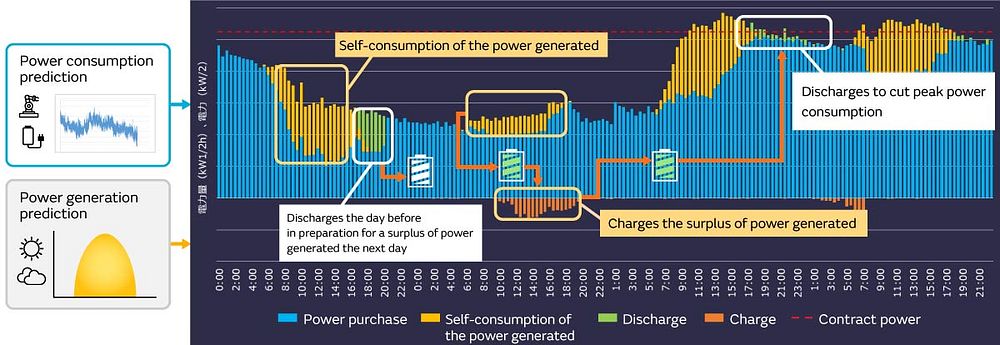
3. Proven Track Record ahead of the Challenge: An Unprecedented Venture
–The development of efinnos, which started in 2019, was a pioneering initiative. Have you experienced any changes within the company since then?
Matono: I myself was originally in charge of energy-related business, so I was aware of the issues. Accordingly, I wanted to make something that would lead to a proven track record quickly. That would require a budget. There were those in the company who skeptically asked whether it would truly be possible at first. Nevertheless, we believed that this technology would definitely be necessary in the near future. We have a company culture that encourages us to tackle new things at an early stage. Therefore, management also supported us.
In addition, thanks to the smooth introduction of efinnos into Kanazu Murata Manufacturing, we were able to achieve a proven track record of operation for the system sooner than we expected. The plant has panels that show the status of power generation and storage in real time. It appears that coming into contact with renewable energy on a daily basis has also been having a positive effect on the environmental awareness of those concerned.
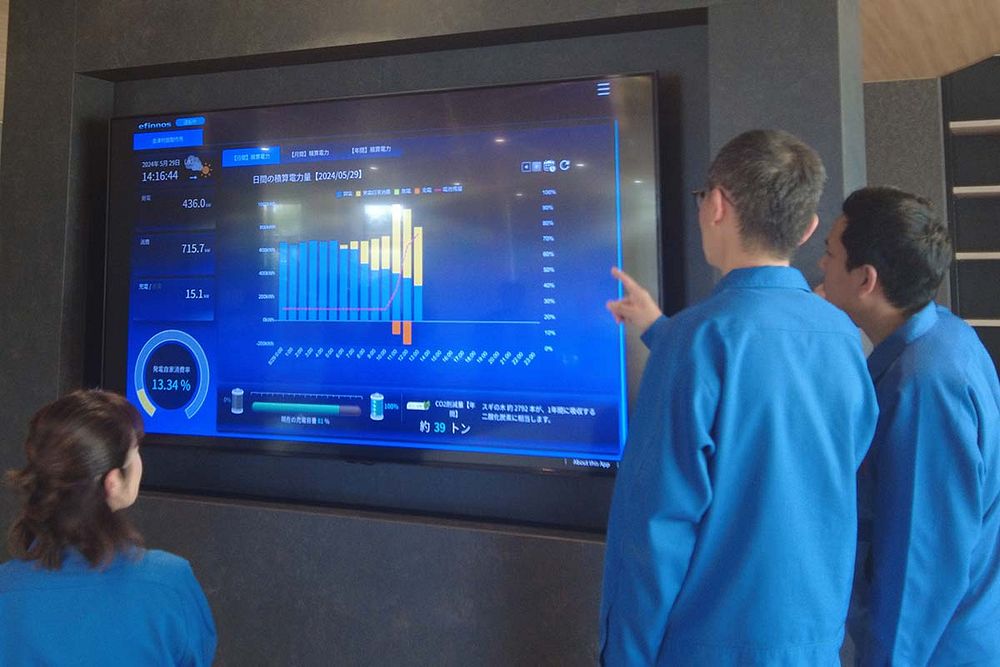
Checking the Status of Power Generation and Storage in Real Time
Mukai: Since efinnos has become recognized within the company, there has been an increase in the number of members newly participating in the project. This includes, for instance, people working on solar power generation in their own homes and people interested in storage batteries. Currently, a team of about 10 people is in charge of this work. I think there has been an increase in the number of people asking questions about energy saving and renewable energy during in-house exhibitions and at other times. I feel that environmental awareness is rising.
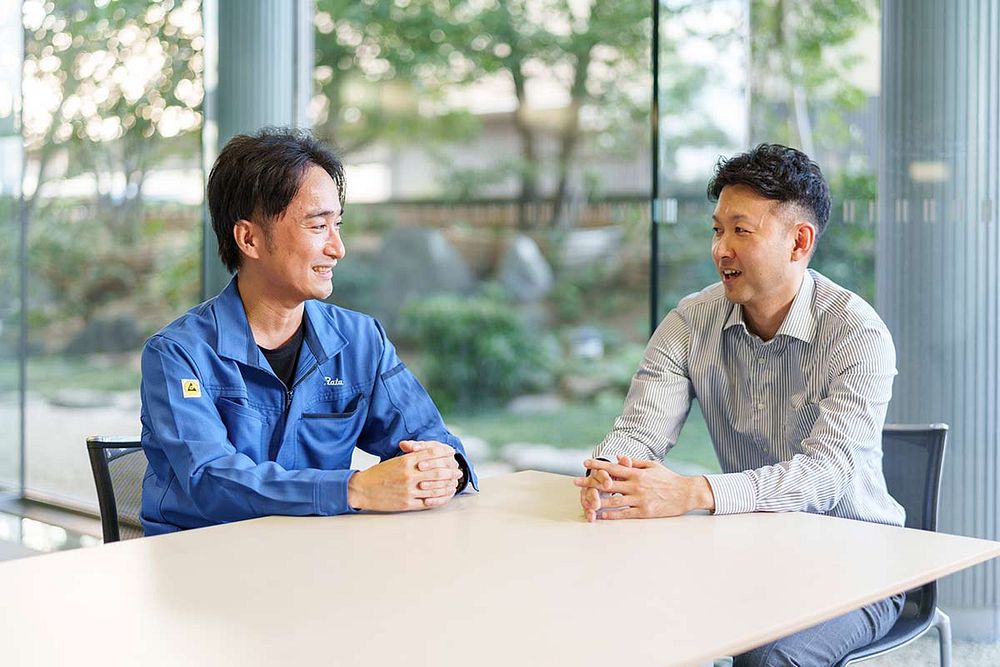
–Please tell us about the difficulties you faced during development that you can talk about now.
Mukai: In terms of the technology, the large physical size of efinnos meant that it was not easy to conduct mock tests. Usually, we mostly make small products, so it is also possible to conduct experiments in a limited space. Therefore, we can collect the data necessary before the trial run. However, in the case of efinnos, it is not possible to conduct the trial run before actually putting it in the plant. Even after conducting repeated simulations, when we actually ran the system, the equipment’s response and the communication situation were different from what we expected. That and other issues meant we needed to make adjustments on-site. It was a little bit difficult to deal with that.
Matono: I went to the site when the equipment was launched in Kanazu Murata Manufacturing. However, I was unable to travel frequently as it was still during the period of the COVID-19 pandemic in 2021. That meant I ended up staying there alone for a long time. Coordinating with the local power company was more difficult than I expected. For instance, I needed to give detailed explanations to show that there would be no adverse effects on the power grid side.
There was no precedent for linking a renewable energy self-consumption system at this size with storage batteries. It took time to make the adjustments. In the end, I ended up staying in Fukui for four months when I had planned to be there for just one month. Nevertheless, the fine adjustments we made and the explanations we gave at that time are now being put to good use in introducing efinnos elsewhere.
4. Expanding Future Range of Use and Next Control Targets
–How do you want to develop efinnos in the future?
Matono: efinnos is currently attracting attention as a system with high social value. Nonetheless, business benefits are essential to make a continuing contribution to environmental challenges. Currently, the initial expenses are still sometimes a barrier to introducing the system. Therefore, we want to create value that will lead to expansion by enhancing the benefits on the introduction side with cost control through connecting the system with storage batteries that have the appropriate specs and specifications according to the application and through a further improvement in the control precision.
To that end, we want even more people to learn about efinnos. We hope to see an increase in the number of people who will work with us to promote the use of renewable energy. We hope, for example, to create opportunities for people to visit and experience the on-site utilization of efinnos and renewable energy. Local children and students sometimes come to visit Kanazu Murata Manufacturing as part of their environmental education. Ideally, there will be opportunities for even more people to freely come and see this, including people living in the neighborhood and local businesses.
Mukai: If the amount of power generated by sunlight increases, it may put pressure on the power grid due to instability in the supply. Therefore, I think that power companies will need to adjust the amount of power sold and to establish the environment to maintain the balance of supply and demand. We can utilize storage batteries to adjust the balance of power supply and demand with efinnos control. Therefore, we believe the system can also play an important role in stabilizing power.
Moreover, in the near future, it will be necessary to expand the range of use of efinnos so that it is possible to control power other than that derived from solar power generation. Particularly promising is green hydrogen made by water electrolysis utilizing renewable energy. The range of energy utilization will expand. For instance, in addition to storing the power generated in storage batteries, it will be possible to store it after converting it to hydrogen. There are technical challenges such as improving the AI monitoring accuracy. We would like to work on preparations to be able to start work early to clarify the challenges.
Matono: It was said in the past that power demand would not increase any further due to the decline in population and advances in energy saving. However, the use of AI has been expanding rapidly and data center needs have been increasing. Such things are expected to lead to an increase in power supply and demand. Even if power demand increases, we will aim to reduce the environmental burden and realize carbon neutrality by contributing to the stability of the system for generating and using power with renewable energy. We would like to continue working with a sense of mission to ensure that efinnos is able to further contribute to providing clean energy over a wide area.




